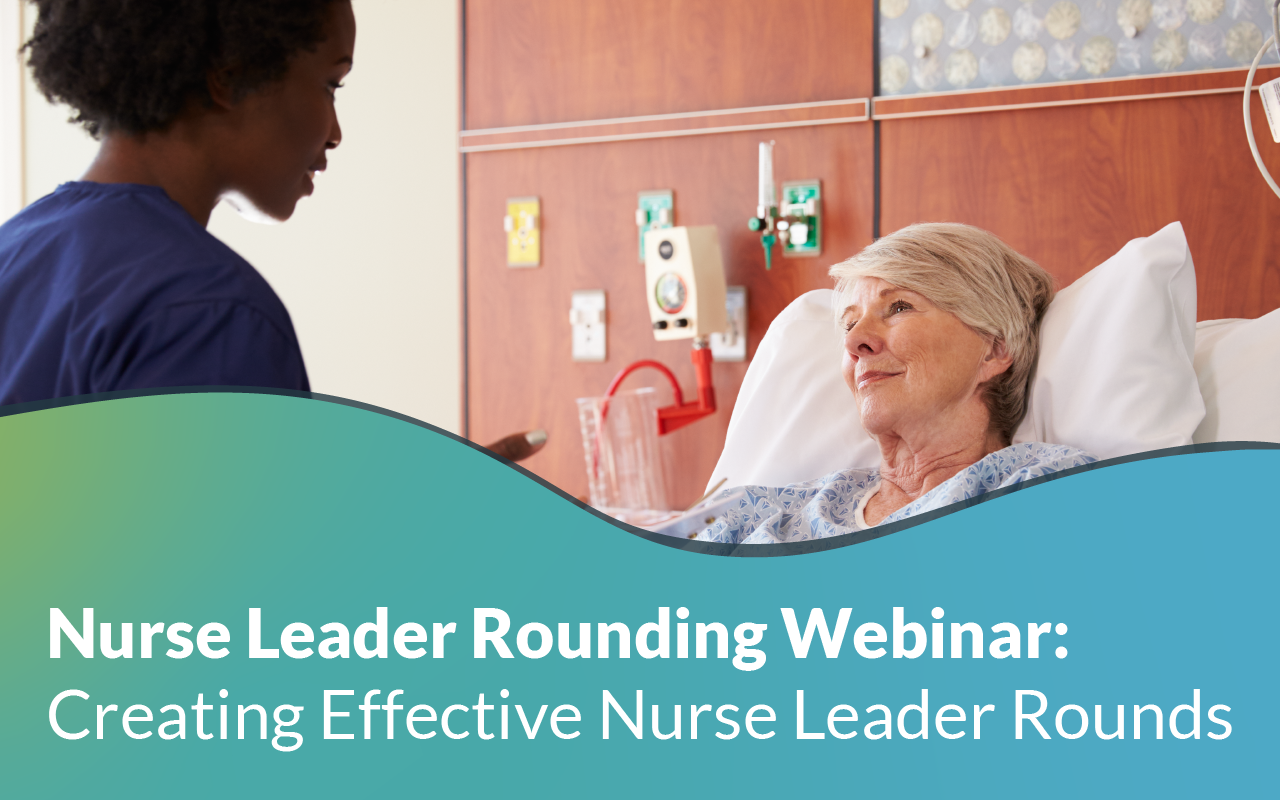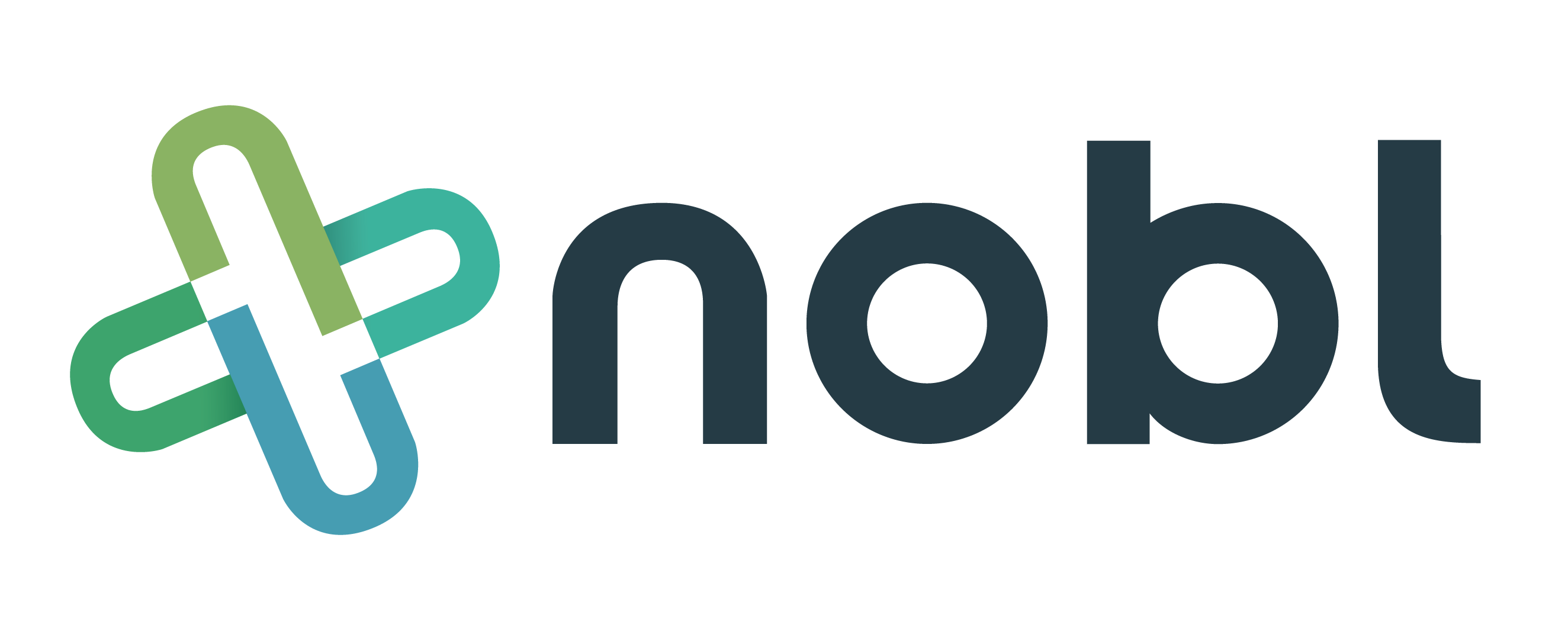
7 min read
Considerations for Medical-Surgical Leader Rounding
Nobl Health Dec 26, 2019 2:29:00 PM
Nurse leader rounding on patients has a strong influence on issue identification and engagement of inpatients prior to discharge. At Nobl, we recognize the unit type differences that exist within acute care facilities, big and small. At a recent onsite visit with a large client, the quarterly data review revealed a “healthy rivalry” between the AVPs of the Medical-Surgical and Critical Care areas for top compliance with rounding goals by nurse managers. For the first time this year, the critical care area leaders were outperforming the medical surgical leaders. Our customizable goal setting process allows all nurse managers to log a completed round if several attempts have been made. This facility credits a leader round if three attempts are made (patient asleep or off the unit) or if an environmental safety assessment is made for critically ill patients. It was at this point that the AVP for Medical Surgical areas pointed out that “nearly all our patients are awake, alert, and in their rooms, so when we round, we are actually completing the entire process as expected.” It was an epiphany for all of us at the table. After years working with leader rounds, it was surprising that we had not previously realized this palpable difference in rounding expectations. While the numbers align, the effort and potential outcomes might be significantly different.
Many other elements should be considered during the configuration and goal setting phases for these units. There is a wide variety of patient needs and expectations, especially on medical units, where dozens of different diagnoses might be seen in a single month. Many of today’s healthcare consumers are looking up their symptoms, diagnoses, and medications which can lead to informed, or in some cases, misinformed consumers who query their caregivers. Contrast this with patients from the veteran and baby boomer generations who might trust the team too far, not expressing concerns until after discharge, then documenting disengagement on post-discharge patient satisfaction surveys. With length of stay as a prime driver of the organization bottom-line, all patients are going home sooner, so real-time follow-up and service recovery become more urgent.
Why are you rounding?

For each different medical-surgical area first determine why you are rounding. Are nurse leaders rounding to improve safety or to improve patient experience? The difference can be pivotal for goal setting, question generation and frequency of rounding by nursing leaders. If safety (i.e. fall reduction) is the key performance indicator, the nurse leader round might focus on patient/family knowledge and understanding of the fall reduction measures, such as bed/chair alarms, the use of gait belts, or the need for all patients to ask for assistance every time they are mobile. Leader rounds might then also encompass “secret shopper” observations for staff compliance with these safety measures and hourly rounding.
If the goals are patient experience, then patient question sets might be driven by use of patient call lights, room cleanliness, quietness, white board communication, beside shift report and any number of key drivers. Audits of the processes beyond patient and family awareness can be completed with separate checklists.
What time is appropriate to round on each unit?

Scheduling a universal rounding time on all calendars so that nursing leaders have time to complete patient rounds, seems like a positive step. But in some cases, these expectations can backfire. Just as every hospital is different, so are medical surgical units. Unit workflow can be impacted by routine testing for different diagnoses, provider rounding preferences, and individual patient needs.
For example, the number of daily medications required by patients admitted to medical units can be markedly different from those on surgical units. The universal “daily meds at 9 am” practices that are still pervasively practiced across the country can become a major safety and experience challenge when some patients may have over a dozen medications all due at once. For nurse leaders to reach out to patients at this time can lead to patients feeling overwhelmed by it all. Imagine the first four waking hours for an elderly medical patient with visits from lab, nurse-nurse bedside report, nursing assistant vital signs, breakfast (which might require the patient to call room service), morning medications, physician/provider rounds (from multiple levels in academic medical centers) and leader rounds. Is it any wonder they become confused?
Do we stop to consider, or ask, our patients what time they would like to visit with a nursing leader? Perhaps the concept of “patient-centeredness” should be replaced with “patient-driven care.”
Paul Levy1, uses the term "patient-driven" over "patient centered" intentionally. Patient-centric, he says, “implies clinicians are in charge, even if the patient is at the center. Patient-driven, however, means the patient is truly in center.” While nurse manager rounding is important, is it more important to plan patient rounds in the early evening (when family and visitors might be available) by another level of leader, such as assistant nurse managers (ANMs)? Some facilities are creating off-shift ANM positions to provide employee and patient rounds after 5 pm when other levels of leadership have gone home. Certainly, something to consider.
What are expectations for rounding on newly admitted patients?

As discussed, the overall purposes of nurse leader rounding are safety or engagement. True patient engagement is about the relationship of the patient/family with the care team and their level of trust in this team to give them good care. With that in mind, rounding on newly admitted patients should be a discussion topic when rounding configurations are designed. Some would say that there is no purpose to round on a patient/family that has only been in the facility a few hours, but there are many valid reasons for nursing leaders to stop in that first day.
The visit might just be about a “friendly greeting” that thanks them for choosing the facility and offers the nurse leader a chance to leave a patient appropriate business card (distributing personal cellphone and office numbers may not be safe or advised in some settings). Providing the patient with a “welcome kit” or assuring that the patient has received one is another great reason for the leader to stop by. In addition to required patient information, welcome kits can contain comfort items, gift cards, coffee coupons, or even sleep aides like earplugs and an eye mask. For patients admitted through the Emergency Department, the admission visit can be an opportunity to either manage up the ED team or start the service recovery process if there were delays or other concerns during that phase of care.
Is it realistic to round on patients being discharged that day?

Patient discharge times are often an ongoing challenge and discussion point for most facilities. There are so many factors impacting the activities between patient discharge ordered by the provider and when the patient actually departs from the unit. Sign off by the primary care provider, consulting services or even the finance office can hold things up. Waiting for new prescriptions, confirmation of durable medical equipment or services for the home, and availability of the family or primary care giver to transport the patient home can all impact the departure. These delays are a primary reason for a nurse leader to round before discharge. We want them to leave feeling like people care and are looking out for their needs. By connecting on a personal level, explaining the processes for post-discharge calls and patient satisfaction surveys, we can enhance response rates and provide “wow” experiences.
How does unit “churn” impact daily nurse leader rounding plans?

Medical-surgical and step-down units typically experience a higher rate of admissions, discharges, and transfers than other areas. This “churn” can make scheduling, staffing and support services a constant challenge. It is not unusual, even with great nurse to patient ratios, for a nurse to care for 10 or more patients in a 12-hour shift. Starting an assignment with five patients, discharging three, and admitting three more to take their places, as soon as EVS can turn over the room, is commonplace. On units where the charge nurse routinely takes a patient assignment, the nurse manager is left to round on admissions, discharges and patients with longer length of stays. This unique workflow might require a different approach on every unit. Utilizing a non-assigned charge nurse or assistant nurse manager to perform some of the rounds is one solution. But if resources are tight, another option is “split” rounding. Rounding on patients going home in the morning right after discharge orders are written, visiting with stable patients while they eat their lunch (often visitors are here at this time) and then greeting new patients after they are settled in, before the leader heads for home.
Over the last three decades, hospitals have slowly gravitated to “high meeting” cultures. The desire to keep everyone informed, welcoming input from all levels (shared governance), and performance improvement strategies (such as rapid improvement events, safety huddles, etc.) have created leader workdays filled with meetings. Very little time is left to perform assigned responsibilities, including rounding. All levels of the organization must evaluate each meeting and limit those that take the frontline leaders off their unit. When census is high, patient and staff need, at the point of service, should take priority over other processes. This is another example of “patient-driven” and not patient-centered care.
Setting realistic rounding goals when “all” the patients are responsive?

The epiphany that nearly all medical-surgical patients are awake, alert, and able to actively participate in a leader round is a valid reason to consider alternative rounding models and compliance goals for these leaders. Time studies might help to estimate the average time to complete a purposeful round by a leader. A ten-question rounding menu that includes 2-3 questions for admission, 3-4 questions for stable patients, and 3-4 for patients heading home can maximize leader rounding time and allow for all data to be tracked and analyzed in one platform. Alternative questions for patients who stay beyond the average length of stay for the unit could be provided in a separate question set, because longer lengths of stay create a greater risk of safety harm events or patient dissatisfaction. These patients might become the priority when leader rounding time is limited. Compliance goals for leaders must consider all these factors. Even criteria for documenting rounding attempts and environmental assessments might need to be re-evaluated.
Maximizing Communication with Friends and Family

Another key process in the care of medical-surgical patients is communication with family and friends. Alert and awake patients often will have many visitors and the healthcare team must explore ways to engage these valuable resources to support both safety and patient satisfaction during the stay. Family members want to keep an eye on their loved one, but they also want to help. By orienting them to assist with comfort measures like fresh iced water, warm blankets, and snacks can save staff time. Teaching them how to safely ambulate a patient by using a gait belt keeps the patient safer and starts the process for safe ambulation after the patient returns home. Engaging visitors early in the process furthers the trust of the team to care for their loved one’s safety.
Using the Nobl Health Friends and Family Portal makes it easy for others to check on the patient securely over any internet connection when they can’t be at the hospital. Reinforcing the availability of the portal, what information it contains, and how to use it is an important part of a leader round. Rounding on visitors can provide valuable information based on their observations, ideas, and needs as well as their use and satisfaction with the portal. When completing post-discharge satisfaction surveys, patients are often influenced by the perceptions of family members, so this is an important population to keep in mind.
Each Medical-surgical unit is a unique microcosm of practice and services within the division of acute care. They differ from each other and they differ from critical care, cardiology, women’s and children’s or rehabilitation. It is very important to plan leader workload and activities around that uniqueness to prevent leader burnout and turnover, and to position leaders to successfully support their team and the patients they serve.
Blog written by Teresa Anderson, EdD, MSN, NE-BC, Chief Nursing Officer
1Becker’s Hospital Review (2013), Patient-Driven Care Beats Patient-Centered Care: Here's Why. Downloaded 12/09/2019 from https://www.beckershospitalreview.com/quality/patient-driven-care-beats-patient-centered-care-here-s-why.html
New Free eBook
Best Practices for Sharing and Reviewing Data from the Nobl Rounding Platform
Beryl Institute Case study
Improved First Impressions at Your Front Door - Patient Ambassador Rounders Enhance the Patient Experience of a Busy Emergency Department
Recent Posts

Five Key Factors to Consider in Pediatric Leadership Rounding



